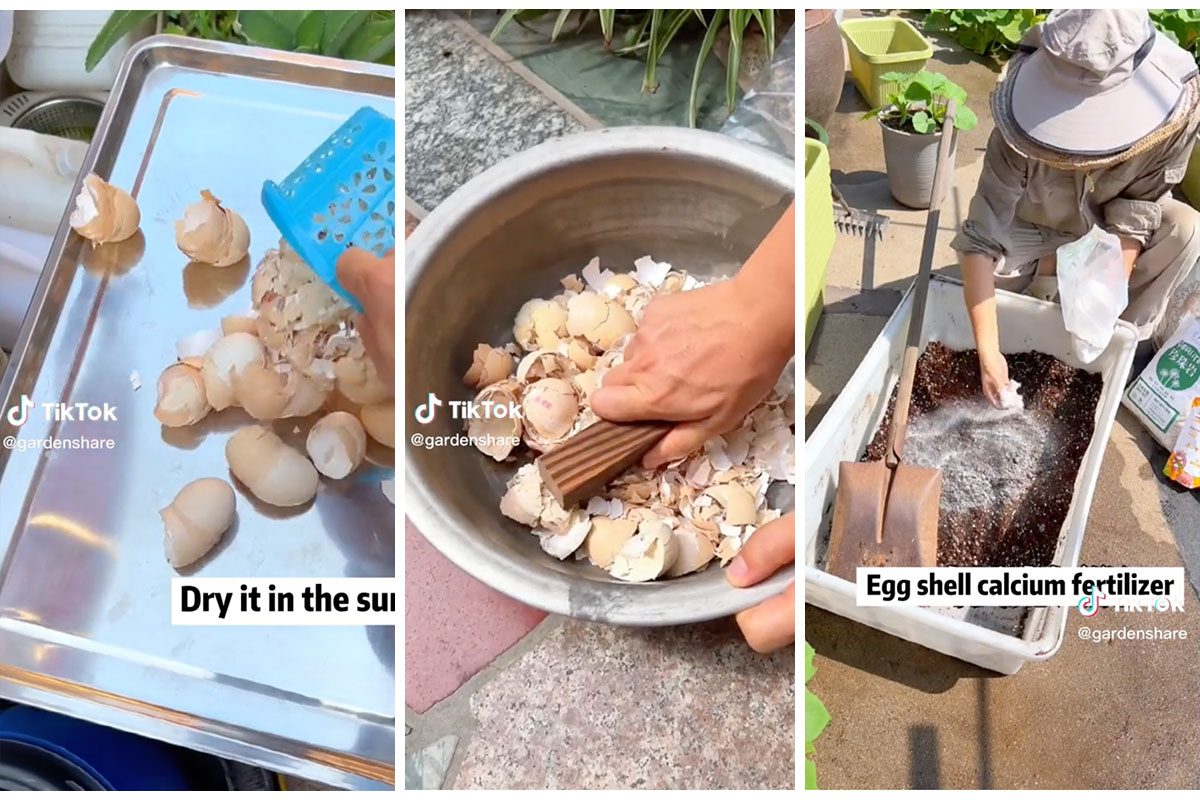Because kitchen trash is garden treasure.

Your Leftover Eggshells Are the Easiest Fertilizer Hack for Your Garden

Do not discard your eggshells. Though they look like kitchen scraps, you can use the extra eggshells to help a garden grow beautifully. A gardening phrase states, ‘Kitchen trash becomes garden treasure,’ and the eggshell is proof of that concept. Using everyday materials such as eggshells for your plants reduces waste and is a long-term and effective way to nourish your garden.
People frequently discuss the three main nutrients required by plants: nitrogen, phosphorus, and potassium. However, every plant requires a specific variety of tiny nutrients to thrive. Calcium is one of the most crucial. This essential mineral provides numerous benefits. It strengthens cell walls, aids water absorption, and increases plant resistance to disease. You don’t need expensive store-bought goods to provide this essential ingredient to your plants; this week, GardenShare, a TikTok producer, reminded us of a simple approach to provide the calcium that your soil requires: crushed eggshells. Save those breakfast scraps. You will discover how to transform them into eggshell fertilizer for your plants.
Why Calcium is Good for Plants
While you’re hoarding your eggshells, let’s discuss why calcium is so helpful in your garden. Calcium provides several benefits to your plant, including
- Strengthening cell walls
- Maintaining pH levels
- Improving water penetration
- Increasing resistance to disease
Envirolizer states, “Calcium is a major component of cell walls, and it is essential for the formation of strong and rigid cell walls. This helps to protect plants from damage and allows them to support their weight.”
How to Know if Your Plant Is Calcium-Deficient
There are four main signs of calcium deficiency in plants. To determine if your plants need more calcium, look out for:
- Curling leaves (also known as ‘parachute leaves’)
- Brown or yellow spots on leaves
- Rot (either above ground or at the roots)
- Slow growth
When in doubt, test your soil to determine which specific amendments it needs.
How to Add Calcium to Your Soil with Eggshells
Now that you have a better understanding of how calcium affects plant growth, it’s time to return to those eggshells! In the below video, GardenShare creates a soil amendment from eggshells to add to their garden.
@gardenshare homemade eggshell fertilizer nutrient soil. #homemade #organicfertilizer #gardeningtips #diygarden #nutrientsoil #eggshefertilizer #gardeninghacks #sustainability #ecofriendly #gardeningcommunity #plantlovers #soilhealth #gardeninspiration #greenthumb #urbanfarming ♬ original sound – GardenShare
In the video, the TikToker first spreads their saved eggshells out evenly on a baking sheet and places them in the sun to dry. Once the shells are dry, they crush them up. You can use a piece of wood, a rolling pin, or a meat hammer to do this yourself.
Then, once the shells are broken into dime-sized pieces, GardenShare pours them into a blender—you can also use a food processor. After pulverizing the shells into a fine powder consistency, GardenShare transfers the powder into a resealable plastic bag for storage. From there, they sprinkle the eggshell powder into potting soil and mix it evenly.
FAQ
Do eggshells prevent blossom-end rot in tomatoes?
Blossom end rot occurs when a tomato is deficient in calcium. Putting eggshells directly into the soil rarely solves the problem. The main issue arises from the plant’s uneven watering. Uneven watering prevents the plant from absorbing the calcium already present in the soil; this is not because the soil lacks calcium. Eggshells degrade slowly; thus, plants cannot absorb calcium from them quickly. The most important strategy to prevent blossom end rot is to water plants on a consistent basis.
How long does it take eggshells to break down?
When left in large pieces, eggshell fertilizer takes several years to decompose in soil. Before plants can benefit from calcium, the shells must be ground into a fine powder. Even so, it may take several months to a year for them to completely break down and release nutrients. Adding them to an active compost pile is particularly crucial.
About the expert
Envirolizer supplies details and items for sustainable agriculture plus soil health. Their blog explains plant nutrients and beneficial gardening, as well as farming methods.
GardenShare (@gardenshare) produces TikTok gardening videos. This creator shares home gardening advice. The videos show sustainable and do-it-yourself ways to garden. For example, the videos describe how to use eggshells in soil.



















